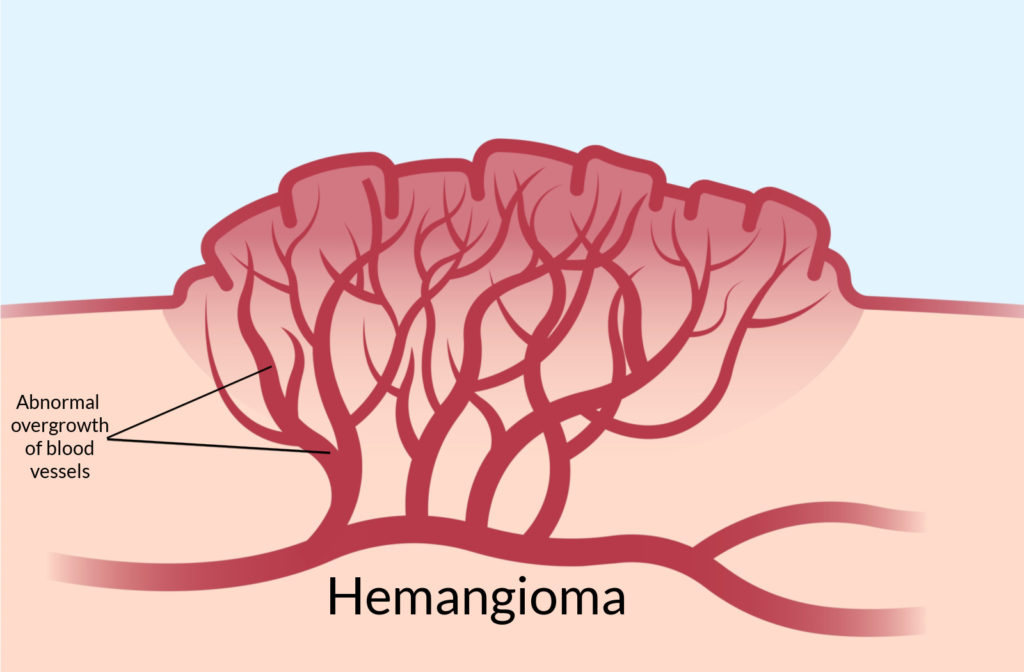Birthmarks can look concerning at a glance or even make you feel self-conscious. Vascular birthmarks are a prime example of a prevalent type of skin mark that can lead to social anxiety.
Vascular birthmarks are common skin anomalies that occur at birth or shortly afterwards. They are caused by abnormal growth of blood vessels in the skin and can range from a small, flat patch to a large, protruding bump. Although vascular birthmarks are considered harmless, many people seek treatment for cosmetic or medical reasons.
Fortunately, pulsed dye laser (PDL) treatment has emerged as an effective solution to minimize or remove vascular birthmarks, whether you’re seeking treatment for your child or as an adult.
Types of Vascular Birthmarks
Vascular birthmarks can vary significantly in shape and size and are usually red, purple, or pink. Some common types of vascular birthmarks include:
- Hemangiomas: occasionally called strawberry marks, nevus vascularis, capillary hemangioma, or hemangioma simplex, they’re raised, red marks made of small and closely packed blood vessels. They most often appear on the face, chest, or back, but they may appear anywhere on the body
- Port-wine stains: these marks develop in approximately 3 of every 1,000 infants and are made of abnormally formed blood capillaries that can darken over time without treatment
Red birthmarks are caused by an increase in the number of small blood vessels in the skin and can be flat or raised. These include port-wine stains, strawberry hemangiomas, and salmon patch birthmarks. Purple birthmarks, also known as cavernous hemangiomas, are caused by a cluster of blood vessels. These birthmarks can vary in size and shape and may protrude from the skin’s surface.

A Hemangioma is a benign (non-cancerous) tumour of blood vessels that can develop anywhere on the body, but most commonly on the face, back, or chest. Often they are not visible at birth or will appear as a faint pink mark, but then the blood vessels grow and can become enlarged very quickly. Unlike port wine birthmarks, these can become elevated and dark purple in colour. They go through three stages of growth, resting and then shrinking. Small lesions may resolve spontaneously, but rapidly growing lesions required immediate oral treatment. Vascular lasers may assist in treatment.
Treatment for Vascular Birthmarks
PDL treatment has become the gold standard for treating vascular birthmarks. This laser treatment targets the hemoglobin in the blood vessels of the birthmark, causing them to heat up and collapse. It can also remove telangiectasias, or “spider vessels,” from the skin.
The laser selectively targets and destroys the blood vessels without damaging the surrounding tissue. This process results in the birthmark’s gradual fading or its complete removal.
PDL treatment is safe, effective, and has minimal side effects and is safe, effective, and has minimal side effects. Most people who undergo PDL treatment for vascular birthmarks experience little downtime and can return to their daily activities immediately.
PDL Treatment Process
Many associate lasers with pain; however, the Candela Vbeam Prima laser includes an internal dynamic cooling device (DCD). With every laser pulse, the DCD delivers a cooling pulse to soothe the area. Everyone experiences pain differently, but any discomfort your child feels is brief.
PDL is the Gold Standard and the most successful treatment for port wine birthmarks. The laser targets and constricts the abnormal blood vessels without damaging the superficial layers of the skin. Treatment should be initiated as early as possible (even at a few weeks of age) to provide optimal outcomes. The procedure can usually be completed within 1-2 minutes and can be done safely in an outpatient setting. There is some discomfort during the procedure, but it dissipates almost immediately and the child recovers quickly. Parents can hold their infants and toddlers through treatment to comfort them if they choose. Dark purple bruising may be visible after the procedure which indicates that the treatment was successful. This will fade over 1-2 weeks. In infants, treatments are spaced 2-3 weeks apart and 10-12 treatments may be required.
The type of vascular birthmark and its size will determine the number of PDL treatments necessary to achieve optimal results. Typically, port-wine stains require the most significant number of treatments because of their darker hue and thickness. On average, 10 PDL treatments spaced 3 to 4 weeks apart are necessary for small-to-medium-sized birthmarks. For more prominent birthmarks, upwards of 15 treatments may be required.
Preventing & Managing Vascular Birthmarks
There is currently no way to prevent or predict the occurrence of vascular birthmarks. However, there are ways to manage them. Sun exposure can exacerbate birthmarks and make them appear darker, so protecting the skin with sunscreen and hats when outdoors is vital.
Erase Vascular Birthmarks Early
Vascular birthmarks are a common skin condition affecting people of all ages. While they are generally harmless, they can cause emotional distress in some individuals. PDL treatment can help ease anxiety in its appearance at any age.
Seeking early treatment for your child can help make a significant difference in eliminating or reducing their birthmark. Remington Laser Dermatology Centre’s skilled team has renowned expertise in treating vascular birthmarks. We combine cutting-edge technology with the latest research to provide optimal solutions for widespread issues like vascular birthmarks.
You are not alone—contact us to book a consultation and let us develop a customized treatment plan to treat your unwanted blemishes.
